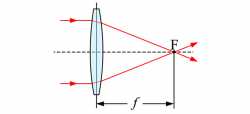>>3965836Three things affect depth of field. 1.) Focal length. The longer the focal length, the shallower the depth of field. 2.) Aperture. The larger the aperture, the shallower the depth of field. 3.) Distance to subject. The closer the lens is focused, the shallower the depth of field.
Notice that I didn't mention format size. Crop sensor, 35mm full frame, medium format, large format, that doesn't affect it at all, all else equal. The devil of course is in that "all else equal", all else is rarely equal. Put a full-frame camera on a tripod and take a picture. Then replace it with a crop camera and take the same picture from the same position at the same focus distance and the same aperture with the same lens. They'll have the same depth of field. Hence the term "crop sensor", if you cut an APS-C sized chunk out of the full-frame image it will look identical to the shot from the crop-sensor camera. But if you don't crop, the FF camera sees a much wider area.
Hence why all else is never equal. If you want to keep the same framing, without cropping, when you change format sizes, you must change one of the things that affects DoF. If you're going from APS-C to FF and want to keep framing constant, you need to either a.) use a longer focal length (shallower DoF) or get closer (shallower DoF). This is why people think there's a difference in DoF between format sizes, because they implicitly hold one of the parameters - framing - constant.

